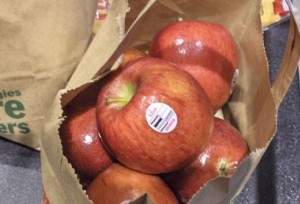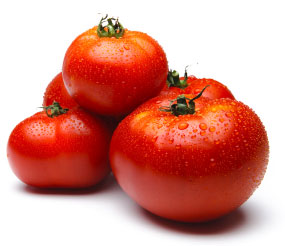 In 1989, environmental activists claimed that a chemical called Alar that was used to assist in the production of lush red apples had created what amounted to “poisoned apples.” They used this claim as part of a campaign to have the substance banned. Yet it turned out that these “poisoned” apples were as much of a fairy tale as the apple in Snow White. The Alar hysteria was completely debunked.(1) Nevertheless, Alar has never been used again on apples in the United States.(2) Moreover, the crusade against pesticide use on produce continues. Consumers Union, the group that produces Consumer Reports, produces a report on the content of pesticides in children’s food(3) and another report on the pesticide residues in various foods.(4) These reports conclude that certain foods have unacceptably high pesticide residues and may well cause cancer.(5) The facts point in a very different direction.
In 1989, environmental activists claimed that a chemical called Alar that was used to assist in the production of lush red apples had created what amounted to “poisoned apples.” They used this claim as part of a campaign to have the substance banned. Yet it turned out that these “poisoned” apples were as much of a fairy tale as the apple in Snow White. The Alar hysteria was completely debunked.(1) Nevertheless, Alar has never been used again on apples in the United States.(2) Moreover, the crusade against pesticide use on produce continues. Consumers Union, the group that produces Consumer Reports, produces a report on the content of pesticides in children’s food(3) and another report on the pesticide residues in various foods.(4) These reports conclude that certain foods have unacceptably high pesticide residues and may well cause cancer.(5) The facts point in a very different direction.
Beyond Safe
Pesticide levels rarely, if ever, approach unsafe levels. Even when activists cry wolf because residues exceed federal limits that does not mean the products are not safe. In fact, residues can be hundreds of times above regulatory limits and still be safe:
- According to one National Research Council (NRC) report, “the great majority of individual naturally occurring and synthetic chemicals in the diet appears to be present at levels below which any significant adverse biological effect is likely, and so low that they are unlikely to pose any appreciable cancer risk.”(6)
- The American Academy of Pediatrics notes: “The risks of pesticides in the diet are remote, long-term, and theoretical, and there is no cause for immediate concern by parents. The risks to children over their lifetime of experiencing the major chronic diseases associated with the typical American diet far exceed the theoretical risks associated with pesticide residues.”(7)
- Various government agencies test produce for residues to ensure that they meet safety standards. The U.S. Food and Drug Administration (FDA) and the state of California conduct the most comprehensive and regular testing. Both find not only that residue levels are far lower than any standard of the U.S. Environmental Protection Agency (EPA), but also that they are most often undetectable (see details in the next section). Residue levels decline even further when we wash produce. One study shows that washing fruits and vegetables can reduce exposure by 97 percent for some pesticides.(8)
Most Residues are Undetectable
In its most recent survey of pesticide residues on food, the FDA has made the following discoveries for samples tested in 2006:
- “In FY 2006, the types of pesticide residues found and their frequency of occurrence in TDS were generally consistent with those given in previous FDA reports. The pesticide residue levels found were well below regulatory standards. Results of baby foods tested in FY 2006 (and earlier years) also provide evidence of only small amounts of pesticide residues in these foods.”(9)
- The report notes: “98.4 % of all domestic foods analyzed by FDA were in compliance with EPA’s established residue tolerances and FDA formal action levels.”
- Not only did most food meet strict government standards ensuring safe residue levels, most food had no detectible pesticide level. No pesticides were found on: 100 percent of milk products, 88 percent of domestic grains, 74 percent of vegetables, 43 percent of domestic fruit, and 93 percent of “other” foods, such as nuts.
- FDA found no residue violations in baby foods.
- FDA reports similarly insignificant pesticide residues for imported food.
Eating Fruits and Veggies Trumps: Pesticide Risks
The main cause of cancer is not pesticide residues, but rather the nutritional value of what a person eats.(10)
- In fact, a seminal study by Sir Richard Doll and Richard Peto apportioned 2 percent of cancer cases to causation by all environmental pollutants found in the air, water, and food and 35 percent of all cancers to dietary factors.(11)
- Accordingly, the World Health Organization advocates increased intake of fruits and vegetables, to reduce the cancer incidence rate by 30 percent across the board.(12)
- The quarter of the U.S. population consuming the least amount of fruits and vegetables has a cancer rate twice as high as the quarter of the population consuming the most fruits and vegetables.(13)
- Moreover, only 36 percent of Americans older than two consume the U.S. Department of Agriculture–recommended amount of five servings of fruits and vegetables a day.(14) Hence, if we want to reduce cancer risks, we should focus on consuming more produce.
Pesticides Promote Health through Affordable Produce
To promote public health, policy should work to ensure that families—particularly lower-income families—are able to afford fresh produce. Pesticides play a key role in increasing supply and thereby keeping these products affordable.
- Use of modern agricultural technology and chemicals has reduced the cost of food, thereby improving nutrition, particularly for lower-income families. In fact, at the turn of the 20th century, before the use of modern agricultural practices, Americans spent 20 percent of their income on food. Now, the average American family spends approximately 10 percent of its disposable income on food.(15)
- Affordability is a key concern for most Americans. Consumers who say that they would pay for residue-free foods are willing to pay only a small increase. In one survey, 46 percent said they would pay more for such products, but only 15 percent of those respondents would pay more than 10 percent extra.(16)
- Without pesticides, the price of raising a crop could increase 5 to 200 times, and those costs would be transferred to consumers in the prices of the goods, according to one estimate.(17)
- Scientist Philip Abelson warned that continued banning of pesticides and fungicides could lead to food scarcities.(18)
“Carcinogens” in Perspective
Environmentalists have long claimed that we should avoid all pesticides because these chemicals cause cancer in rodents and, hence, must be dangerous to humans. But even if pesticides were not used, every time people eat they would shovel in these “rodent carcinogens.” People consume such natural rodent carcinogens without ill effects, and the same is true for low-level pesticide exposures. Consider these facts:
- • Bruce Ames and Lois Swirsky Gold of the University of California at Berkeley estimate that the amount of residual carcinogenic pesticides in food is 1,800 times less than the amount of carcinogens derived from 54 natural plant chemicals that are found in food.(19)
- Cooking food produces 2,000 milligrams of burnt material per person per day. Burnt material contains many rodent carcinogens and mutagens.
- A person consumes only 0.09 milligrams per day of the residues of 200 synthetic chemicals that the FDA measures.(20)
- As Ames and Gold point out, there is little difference between naturally occurring chemicals and man-made chemicals. They find that 99.99 percent of the chemicals that we eat are natural. Plants produce such chemicals to defend themselves against insects, fungi, and other predators. Ames and Gold estimate that “on average Americans ingest roughly 5,000 to 10,000 different natural pesticides and their breakdown products.”21 Hence, we consume far more naturally occurring pesticides on plants than we do manmade ones—without ill effect. This reality underscores the fact that current exposure to manmade chemicals is not significant and poses a very low-level risk. Ames and Gold specifically note: “The possible carcinognic hazards from synthetic pesticides (at average exposures) are minimal compared to the background of nature’s pesticides, though neither may present a hazard at the low doses consumed.”(22)
Endnotes:
(1) William P. Kucewicz, The Great Apple Scare: Alar 20 Years Later (New York: American Council on Science and Health, 2009), see also, Fredrick J. Stare and Elizabeth Whelan, Fad-Free Nutrition (Almeda, CA: Hunter House, 1998), 262.
(2) Stare and Whelan, Fad-Free Nutrition, 262.
(3) Edward Groth III, Charles Benbrook, and Karen Lutz, Update: Pesticides in Children’s Foods (Washington, DC: Consumers Union, 2000).
(4) Edward Groth III, Charles Benbrook, and Karen Lutz, Do You Know What You’re Eating? (Washington, D.C.: Consumers Union, 1999).
(5) Groth, Benbrook, and Lutz, Update, 24.
(6) Committee on Comparative Toxicity of Naturally Occurring Carcinogens, Board on Environmental Studies and Toxicology, Commission on Life Sciences, National Research Council, Carcinogens and Anticarcinogens in the Human Diet (Washington, DC: National Academies Press, 1996), 336–37.
(7) International Food Information Council Foundation, IFIC Review: On Pesticides and Food Safety (Washington, D.C.: IFIC Foundation, January 1995).
(8) Henry B. Chin, “The Effect of Processing on Residues in Foods,” in Pesticide Residues and Food Safety: A Harvest of Viewpoints (Washington, DC: American Chemical Society, 1991), 171.
(9) Pesticide Residue Monitoring Program FY 2004 – 2006 (Washington, D.C.: U.S. Food and Drug Administration, March 2011).
(10) Robert S. Lichter and Stanley Rothman, Environmental Cancer: A Political Disease? (New Haven, CT: Yale University Press, 1999).
(11) Richard Doll and Richard Peto, “The Causes of Cancer: Quantitative Estimates of Avoidable Risks of Cancer in the United States Today,” Journal of the National Cancer Institute 66, no. 1192 (1981): 1235, 1251. See also sections on this website on “ Cancer Risk Factors” and “Cancer Trends,” in The Environmental Source.
(12) World Health Organization, Programme for Cancer Control, Developing a Global Strategy for Cancer (Geneva: World Health Organization, 2000).
(13) Bruce N. Ames, and Lois Swirsky Gold, “Environmental Pollution, Pesticides, and the Prevention of Cancer: Misconceptions,” FASEB Journal 11, no. 3 (1997): 1041–52.
(14) “Achievements in Public Health, 1900–1999: Safer and Healthier Foods,” Morbidity and Mortality Weekly Report 48, no. 40 (1999): 905–13.
(15) International Food Information Council Foundation, IFIC Review.
(16) National Research Council, Commission on Life Sciences, The Future Role of Pesticides in U.S. Agriculture (Washington, DC: National Academy Press, 2000), 85, .
(17) Stare and Whelan, Fad-Free Nutrition, 92, citing J. G. Edwards, “Antipesticide Ads’ Lies Are Hazardous to Our Health,” Priorities 4, no. 4 (1995): 45–46.
(18) Philip Abelson, “Adequate Supplies of Fruits and Vegetables: Fungicide Ban Would Reduce Supply of Healthy Foods,” Science 266, no. 5189 (1994): 1303.
(19) Bruce Ames and Lois Swirsky Gold, “Chemical Carcinogenesis: Too Many Rodent Carcinogens,” Proceedings of the National Academy of Science 87, no. 19 (1990): 7772–76.
(20) Ames and Gold, “Environmental Pollution, Pesticides, and the Prevention of Cancer,” 1045.
(21) Ibid., 1044.
(22) Ibid., 1147.
Last updated: February 10, 2012. The original text for this article was drawn from Angela Logomasini and Jennifer Zambone, “Pesticides and Agriculture,” in Environmental Source, eds., Angela Logomasini, Ph.D. and David Riggs, Ph.D., Competitive Enterprise Institute, 2002 (1st ed.), 2008 (2nd ed.).

